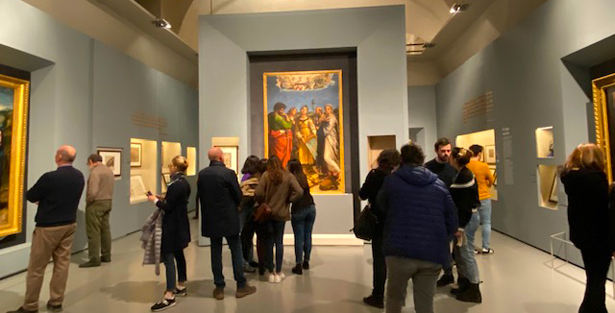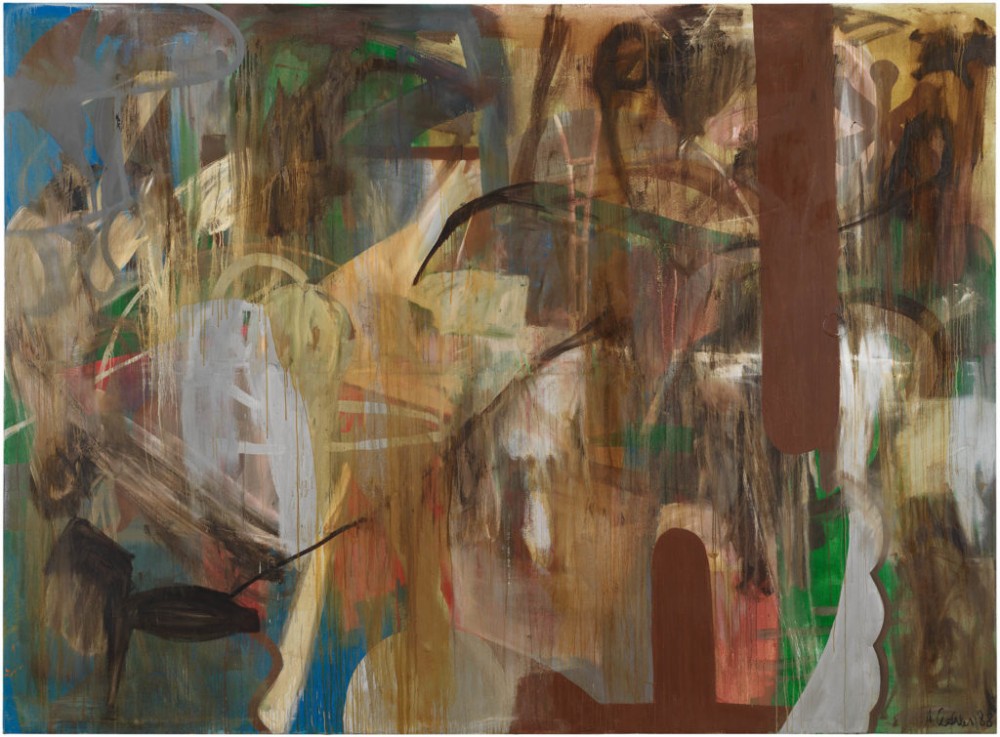






Art for Survival |
|
In a time of disparity where galleries are closed and artists are forced to create in the confines of their own home, I assess the adaptation and survival techniques employed by the art world in a fight against COVID-19. |
 |
Being in the midst of a digital era is proving to have some significant benefits for the cultural world, in which many smaller galleries, as well as internationally-acclaimed public institutions, are turning their exhibitions into virtual spaces. Such a global shift in practice improves accessibility for the wider population who before, may not have had the chance to experience such exhibitions. The initiative, “Culture never stops!”, derived from the Italian cultural sector, is demonstrable of the newly formed digital age for art galleries. Like many, the Scuderie del Quirinale hosting the ‘Raffaello’ show, has aired the exhibition on the platform, Youtube. It’s success is demonstrated by its viewing audience of over 340,000 throughout the course of three days.
|
|
Similar to the public institutions, commercial art galleries have also had to follow suit and shut their doors for business. Gallery Different, like many other commercial art galleries, has seen its artists’ exhibitions fall victim to physical cancellations in the wake of COVID-19. However, through adaptation and initiative these exhibitions have found home on the online platform, KunstMatrix. Despite what some regard as a devastating and forced alteration for the art market, Timothy Rooks points out that a ‘catastrophic pandemic’ could be the reality check needed to ‘upend one of the world’s most staid business models and let buyers shop online from anywhere in the world.’ |

|
|
Alongside the digital revolution that the coronavirus has forced upon us, there are other new and exciting initiatives emerging from the art community, due to the pandemic. Last week The Art Newspaper covered a story on artist Jody Wood, who has created S.O.S (System of Support). This network has been set up in New York and California, specifically in the face of corona virus, to connect people in need of care, with those willing to aid them. Adhering to safety guidelines, those in need can be helped to fulfil basic or specific needs. Each pairing is based on postal codes, and neither party has to divulge information they do not wish to share. |
|
The strong sense of community that is emanating from this crisis, continues to be felt with the latest initiative by resident artist Paul Stafford, Robin Hutchinson MBE, and the Director of Gallery Different, Karina Phillips. Proposed after a number of lengthy discussions, Artists for the NHS, is a charity based, artist led movement to raise money for the feeding of our NHS staff on the frontline. With the help of 200 hundred artists, and on the 200th anniversary of Florence Nightingale’s Birthday, 200 artworks will be auctioned live, aiming to raise over £200,000 to feed our devoted National Health Service. |
|
Likewise, across the United Kingdom, over 40 museums and conservators have joined in an effort to donate PPE (Personal Protection Equipment) to hospitals across the country. The equipment donated, comprising of gloves, masks, aprons and goggles, would have previously been used in the conservation process of artworks in the protection against dust and hazards, and natural oils from human hands. Institutions supporting this effort include, and are not restricted to, the British Museum, the Victoria & Albert Museum, Ashmolean Museum, and Scotland’s national museums and galleries. Headed by three young designers; Phoebe English, Holly Fulton, and Bethany William - the museums are continuing to support the fight by donating large quantities of the synthetic material, Tyvek. Such a material can be used in the production of masks, and scrubs – both of which are in short supply. |

|
If COVID-19 has taught us anything, it is that the charitable actions of our peers never goes unnoticed. Chris Sharratt, a freelance writer and editor reminds us, ‘just as in wider society, it’s the most vulnerable that are set to suffer the most and, in the topsy-turvy value system of contemporary art, that means artists and other freelancers.’ Whilst many employees across the U.K. will still be paid 80% of their salary, the self-employed artists will only be able to receive a maximum of £94.25 a week through the Universal Credit scheme. It is during these turbulent and unprecedented times that we look to aid our artists, and continue to promote their work through our online resources. Whilst galleries do not have the means to host physical exhibitions, it must be remembered that many collectors are turning to online platforms to browse and purchase works. As society has adapted to the digital evolution, so has our trust and with a sharp rise in online retailers to suit each of our needs, we are not afraid to trust the digital image. In this way, our consumer habits have shifted significantly. In Art terms, this has led to an increase in online art sales, trusting the Jpegs for investment needs – particularly at a time when other investments are so volatile. One of the largest platforms for this is ‘Artsy’, which represents an expansive array of art, and art prices. In March 2019, a 1988 work by German Albert Oehlen was sold by Gagosian for $6 million, without ever being seen in person. Alongside this, businesses such as the international arts agency LUX, who host weekly screenings, discussion forums, and creative activities, are revolutionising the practice of ‘audience engagement’, to keep up with our changing needs. Much like LUX, Gallery Different will be posting a series of videos of artists’ practice, interviews, and tutorials. Such efforts are being employed to help give a voice and a presence to those struggling artists. Suzy Delvalle implores us to, ‘if you can, […] buy their work online, get tickets to virtual performances […] and support the relief efforts that are beginning to appear. The world we emerge to when this is over will be better for it.' |
|
The fundamental societal role that museums and galleries play in our lives - being a sanctuary for reflection, hope and human interaction, is not completely quashed by COVID-19. We must continue to look to artists, and online platforms, as a beacon of hope in this strange and unparalleled time. The enriched sense of community that has flourished from this pandemic, and the charitable actions demonstrated throughout the whole of the United Kingdom, show a society working together. Stay home, save lives. |